Tips to integrate SMS and Phone Calls in Salesforce

7 min
Why do we need to integrate SMS and Phone Calls in Salesforce? Integrating SMS and phone calls in Salesforce helps sales reps to instantly connect with customers (Contacts) and prospects (Leads). Phone Call integrations increase productivity as they enable you to call contacts by clicking on their phone number in Salesforce, automatically logging calls, taking notes in the app, and more.
Similarly, integrating SMS and MMS is helpful for one-to-one conversations. And the best part is statistics reveal that text and multimedia messages have a 97% open rate. Convinced yet?
“Statistics reveal that text and multimedia messages have a 97% open rate”
Basic Terminology of Integrating Phone calls in Salesforce
The three basic terms that we come across while integrating phone calls in Salesforce are Softphone, Call Center and Open CTI.
Softphone simply put is the phone screen that pops up when you make or receive a phone call from your computer.
Call Center is an out-of-the-box feature for Salesforce that integrates the CRM with call systems built by third-party organizations or developers.
Open CTI is a JavaScript API that lets us build and integrate third-party cloud-based caller systems with Salesforce Call Center.
Example of a basic Phone Call integration
There are diverse CTI options available for companies using Salesforce. Spoiler: There isn’t a one-size-fits-all solution, so you’ll have to research which CTI will help you best run your operations smoothly and efficiently.
PhoneIQ provides an all-in-one cloud phone system and call center software for companies that run on Salesforce so we’ll take it as an example for this case.
1. Download a Salesforce CTI package from the AppExchange.
2. Launch the service setup and find and click the Call Center option in the Quick Find box.
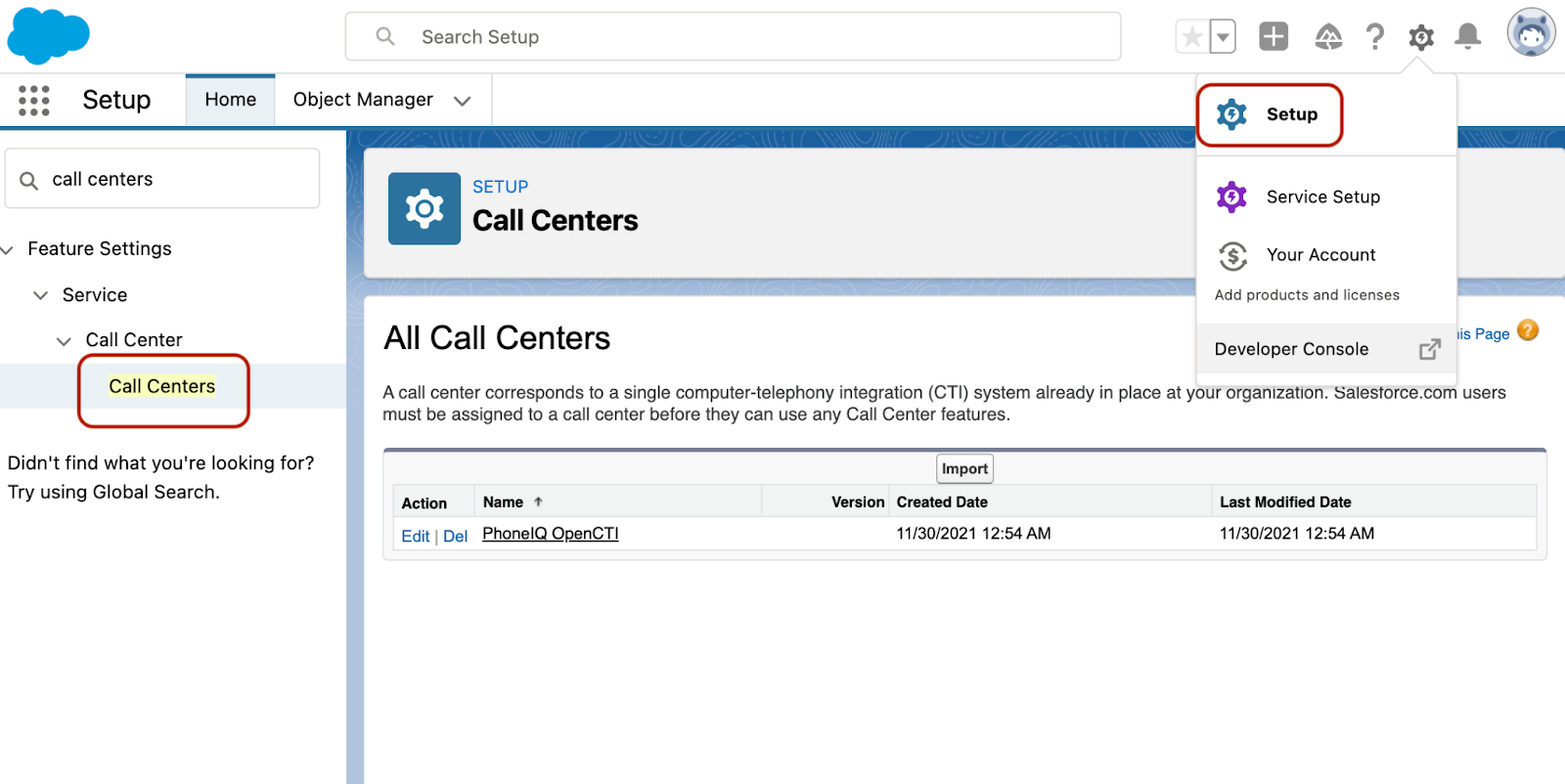
3. On the Call Center overview page click Import and import the CTI. In case you are using PhoneIQ then select on the word “PhoneIQ Open CTI”.

4. After importing you will be able to view the CTI in the Salesforce Call Center. Given we use PhoneIQ, we will be able to see the detail page for the PhoneIQ Open CTI.
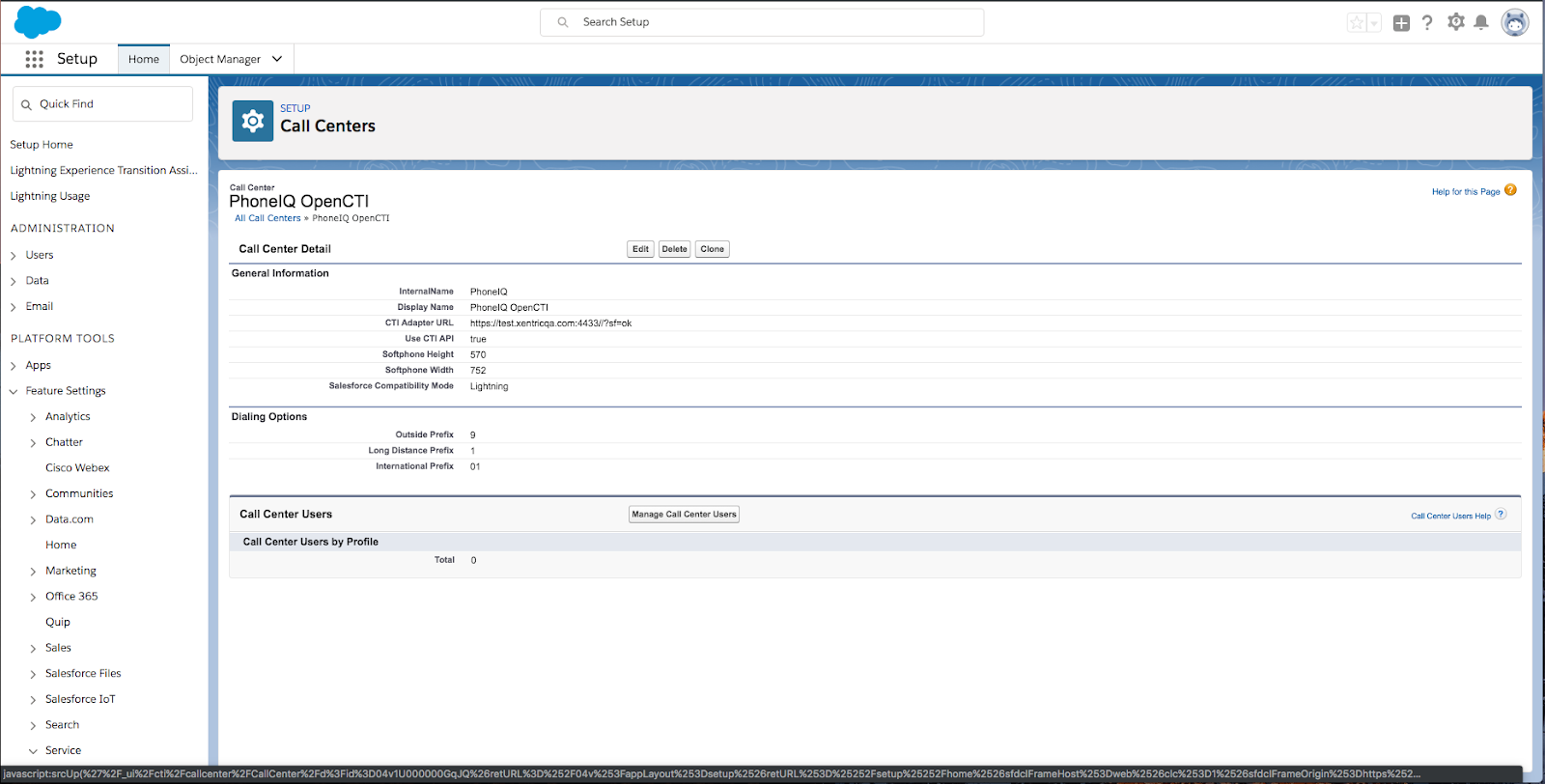
5. Click “Open the CTI” and Assign users to the Call Center by clicking “Manage Call Center Users”.
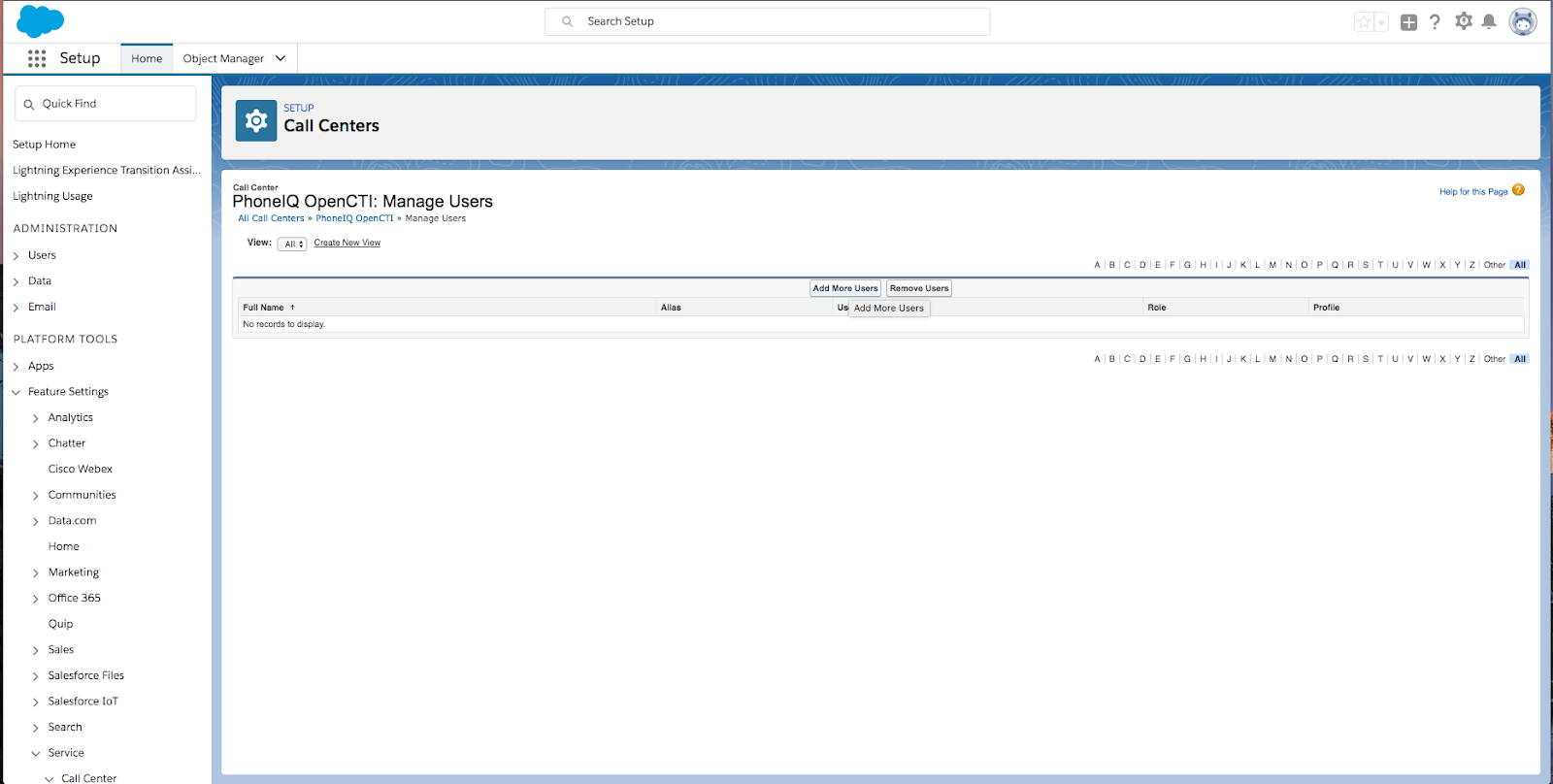
6. Click “Add More Users”. You can also filter out the users you want to add while doing this.
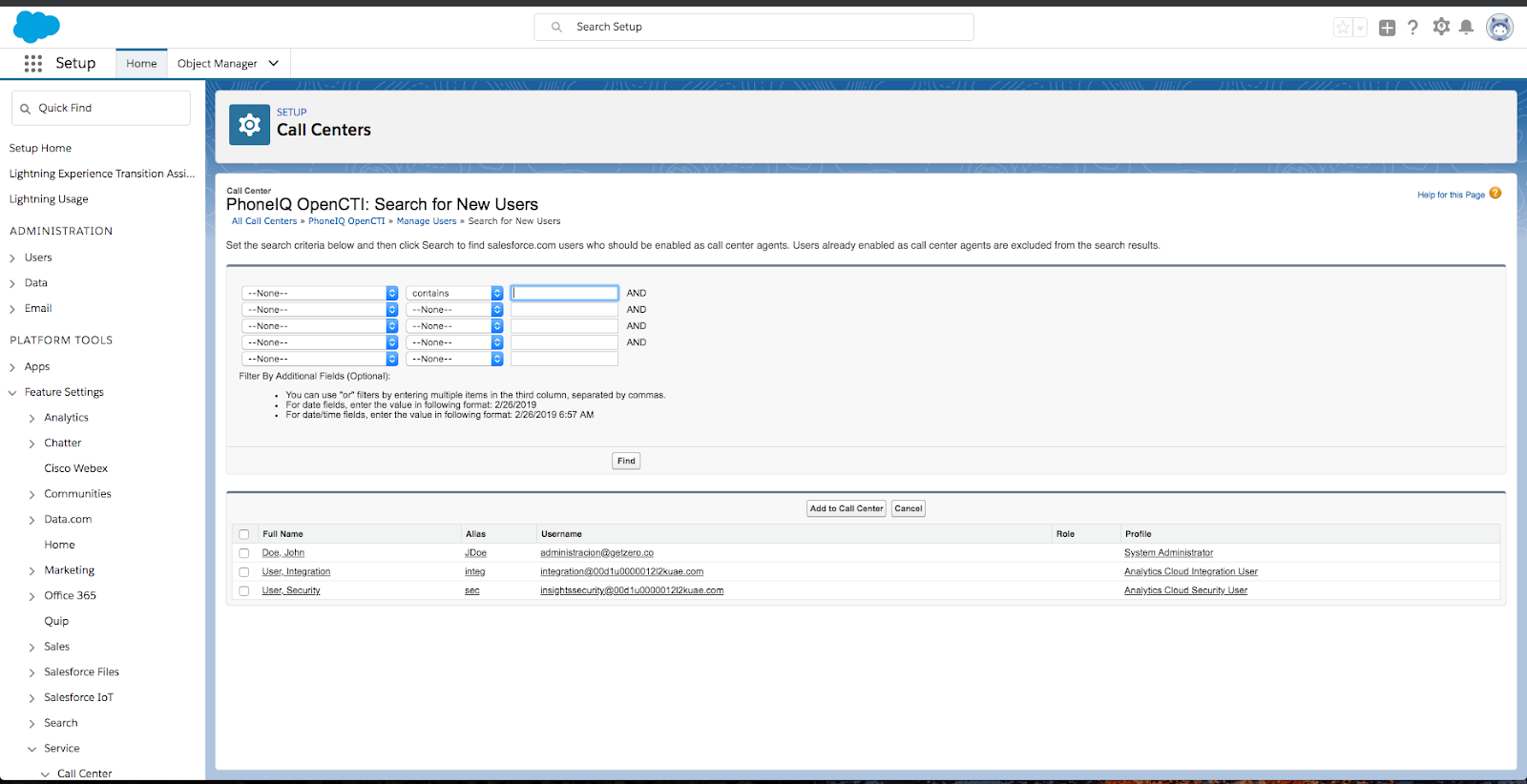
7. After filtering users click “Find” and check the box next to the name you want to add, and click “Add to Call Center”.
8. After setting up the Call Center and Adding Users, we can move on to set up the Softphone. Go to the App Manager and select the Service Console.
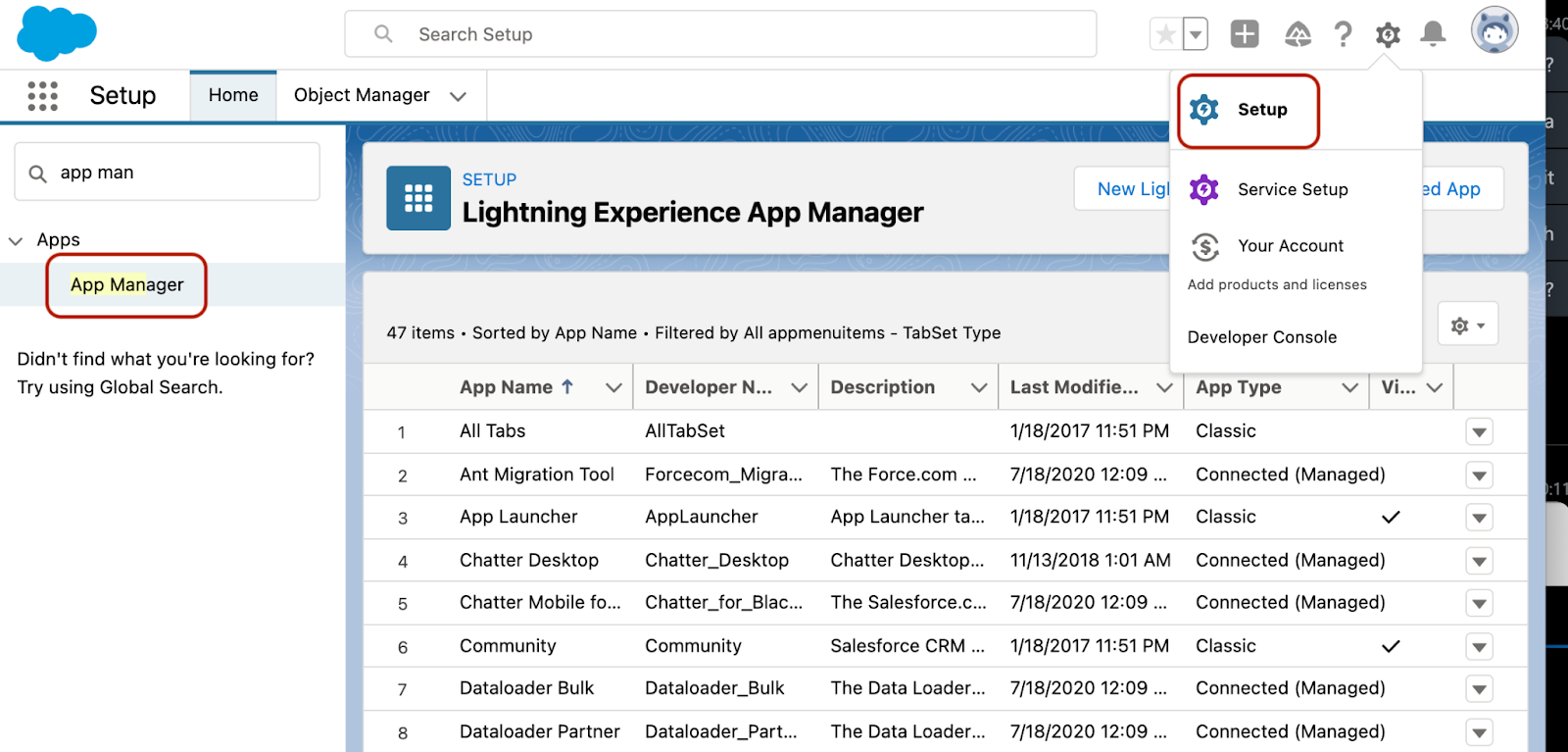
9. Click “Edit” next to the Service Console app.
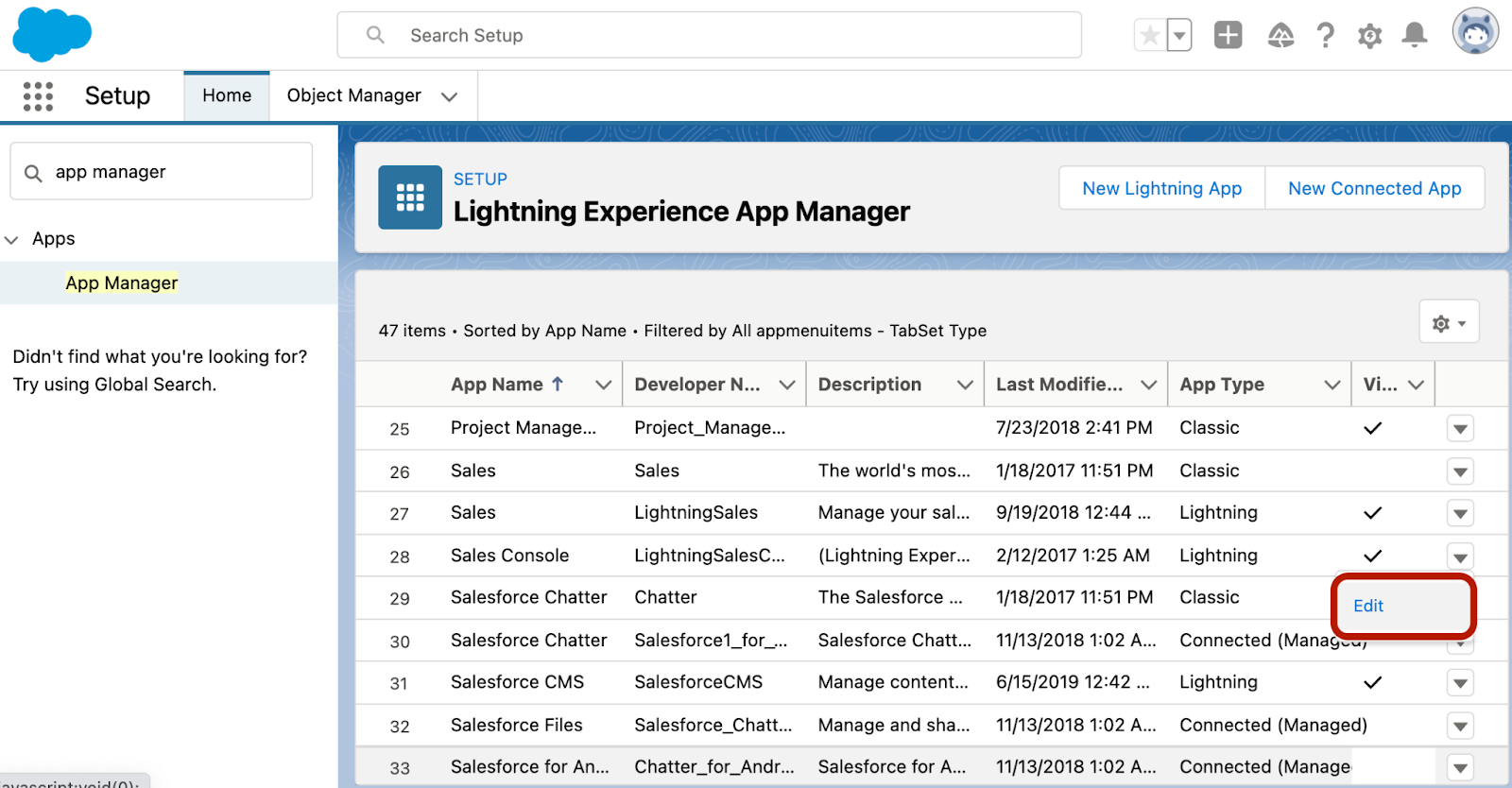
10. Click “Utility Items”, and then click “Add Utility Items”.
11. In the Search bar enter the CTI that you are going to use and select it. Let’s say we want to search for PhoneIQ: we should search for it in the Search bar and select it.
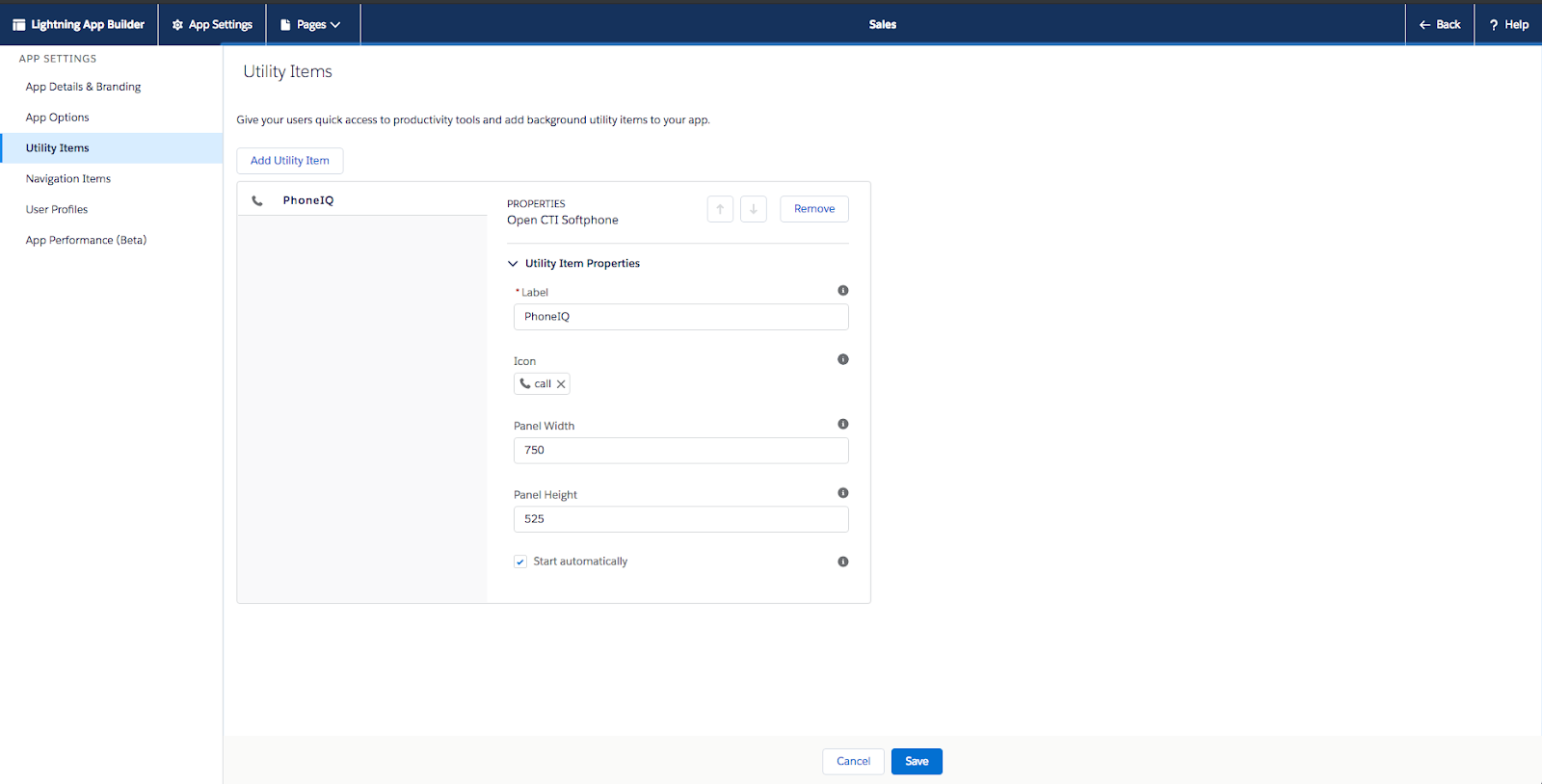
12. Do not forget to check that the appropriate profile is assigned to the Service Console App. If it’s not, add it and click “Save”.

Now if we check, we will find the Phone in our Utility Bar within the Service Console App.
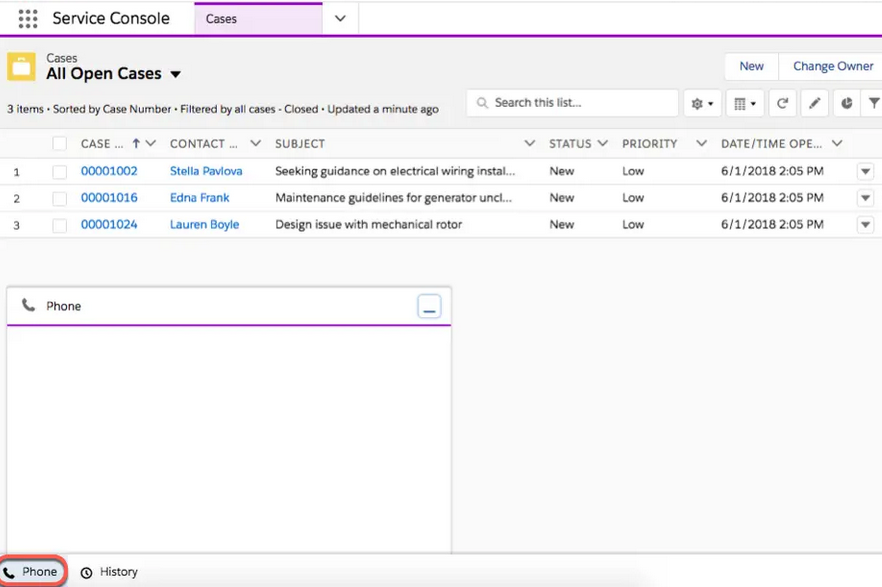
This is how you can integrate a basic Phone Call System in Salesforce.
Tips to keep in mind while integrating Phone Calls in Salesforce
We all understand the importance of time for Sales representatives of all business types. Integrating phone dialing in Salesforce eliminates the manual time-consuming dialing process. Integration helps in automation and accurate dialing for sales representatives so that they can concentrate more on their conversation with clients.
There are many products available in the market like PhoneIQ. Not only do they integrate phone systems but provide other capabilities like call recording, Salesforce screen pop up, transcription, voicemail drop, local presence dialing and call analysis. So we recommend you bearing in mind to:
1. Always try to opt for OOB Salesforce Phone Call systems instead of jumping to Third-party integrations in Salesforce.
2. While integrating a Phone Call system check whether it is supported by your current Salesforce Edition.
Example: Sales Dialer is only Available with Sales Cloud and Service Cloud in:
Essentials, Professional Enterprise, Performance and Unlimited Editions.
3. Make sure the browser you are using is compatible with your Phone call System of choice.
4. Assign a Dialer number so the calls made do not appear to be coming from an unknown number.
5. It is always useful to make the Dialer or the Phone Call System available from the utility bar at the bottom of the page. The utility bar gives your sales reps quicker access.
6. It’s important to manage users and enable them to access the Dialer or the Phone Call System.
7. Enable Local Presence feature (if available) to increase the chances of the phone call to be answered by 300%!
8. Enable Auto call logging feature (if available) to simplify sales process and keep track of every call within Salesforce.
Tips on SMS integration Apps
An SMS platform can help you follow up with prospects and customers after initial phone calls. We can use it to broadcast texts for campaigning purposes etc. We can also use it for one to one messaging. Bulk or broadcasting messages do help in situations where confirmations, updates or reminders are required, while one-to-one do wonders where personal conversation is needed, for example in follow ups or scheduling appointments.
We can find multiple Apps on AppExchange, using below tips we can use them effectively.
1. Use a True Native Integration SMS platform.
2. Routing Messages to Answer Customers Faster. Example: We can set up automatic message routing based on keywords. A message containing the word “return” can route to a return specialist, while a message containing the word “product” can route to a product specialist.
3. Setting up automatic answers to frequently asked questions, based on keywords in the received text. For instance, a text message containing “How long does a refund take?” can generate an automated text reply containing the standard waiting period of a refund.
4. Using Scheduler to schedule timely texts for updating customers or to send broadcast text messages for campaign.
5. Use a proper SMS template to address customers.
6. Configure the SMS platform for 1:1 conversation in real-time with customers.
7. Assign Licence of managed package to users: When you install a licensed managed package in your organization from AppExchange, you purchase a certain number of licenses from the package developer or publisher. You can assign each license to a user within your organization. If you assign all available licenses, but would like to grant licenses to additional users, you can reassign a license or purchase more.



.jpg)
.jpg)

































